
We do not know how it happened that in our described places, which are worth seeing in Crete, so far there is no description of the Gramvousa fortress. So we are catching up and publishing a historical outline and some other information.
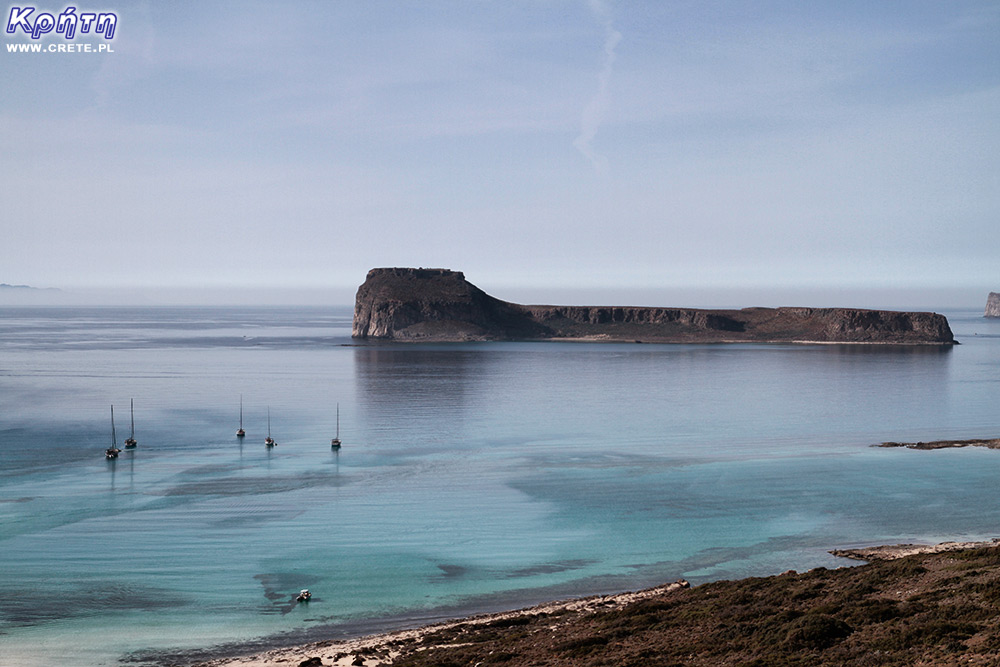 Imeri Gramvousa Island from the side of the Balos Lagoon
Imeri Gramvousa Island from the side of the Balos Lagoon
The island of Gramvousa, or in fact Imeri Gramvousa ( Ήμερη Γραμβούσ α), is an inseparable point of a trip that combines a stay in the Balos Lagoon with visiting the remains of a fortress located on the top of the island of Imeri Gramovousa. This is one of the most popular tourist trips in Crete. And unlike the Balos Lagoon, there is no room for dilemmas such as "better by car or by boat". Imeri Gramovusa is an island, so outside of the boat you won't get here otherwise.
It is also one of the most stunning places in Crete. The views from the old Venetian fortress compensate for the hardships of climbing steep steps. The delightful color of the water, shimmering with various shades of blue, azure and turquoise, contrasts beautifully with the orange shade of the rocks and the walls of the fortress. In the distance, you can see the Balos lagoon located at the foot of the 715-meter peak Geroskinos crowning the Gramvousa peninsula belonging to Crete.
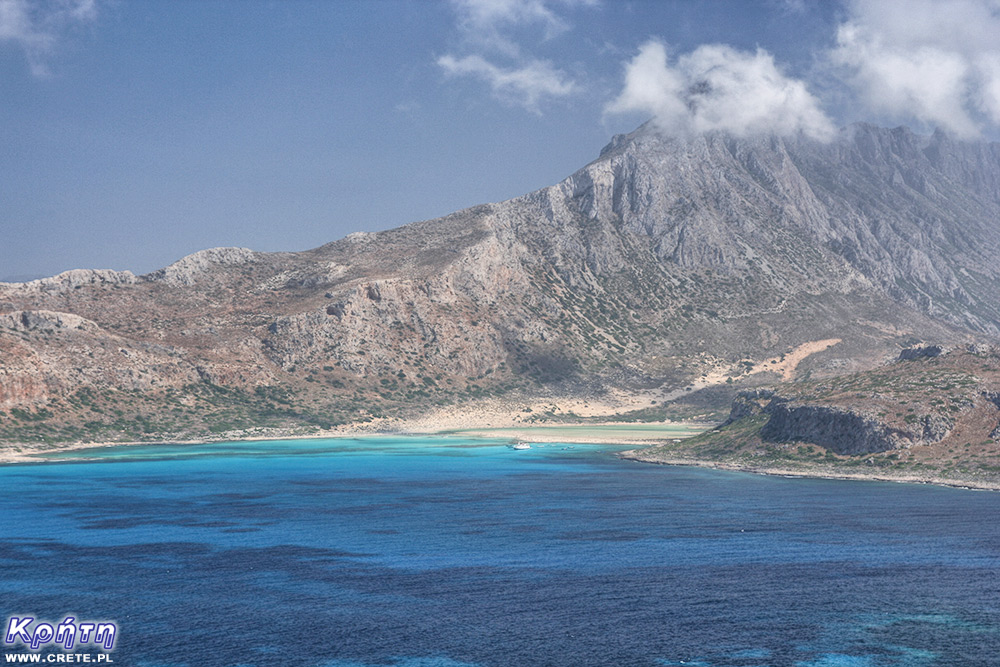 Geroskinos peak as seen from the fortress
Geroskinos peak as seen from the fortress
North of Imeri Gramovusa is another island called Agria Gramvousa. This name came about for a reason, Agria, meaning wild. Access to it is difficult due to high rocks. This hostile island is protected under the Natura program.
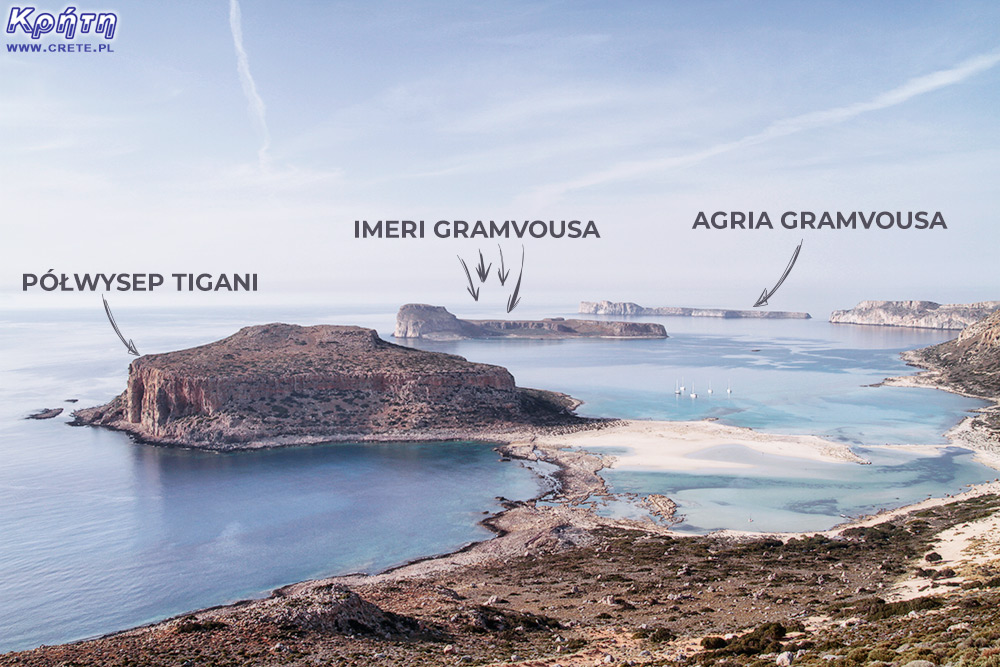
Imeri Gramovysa's landscape is reminiscent of African landscapes. This region, together with the Balos Lagoon, is one of the most important protected areas in the Eastern Mediterranean. There are over 100 species of birds and 400 species of plants. These areas are visited by the Mediterranean monk seal (a species of seal), which is threatened with extinction. Currently, its number is estimated at no more than 500 individuals. There are also individuals of the endangered Caretta caretta turtle species.
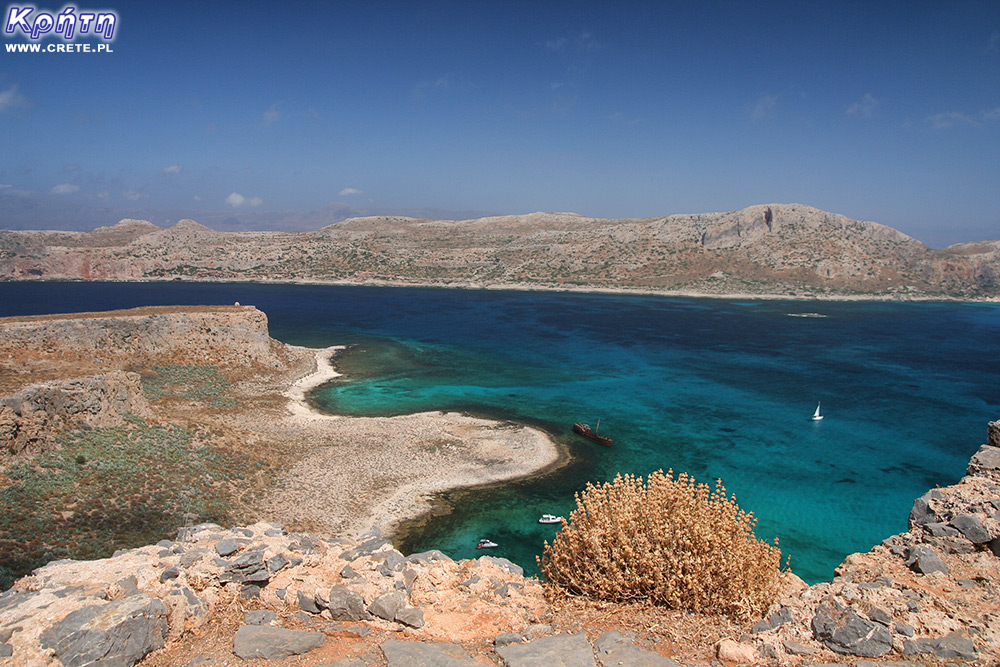 Imeri Gramvousa area
Imeri Gramvousa area
The main and, in fact, the only destination for excursions to Imeri Gramvousa is the Venetian fortress erected about 137 meters above the water surface, to which access is blocked by 365 steep steps. Overcoming them in 30-degree heat in the rays of the scorching sun is quite a challenge.
Until recently, the attention of visitors was also attracted by the rusty wreckage of the Dimitrios P ship, lying here on the shoal of the bay, but time and salty sea water slowly "worked it out". The ship was carrying a cargo of cement in 1967 when bad weather forced the captain to seek shelter. Misfortunes like to go in pairs, and in this case the anchor turned out to be the second negative event. During the stop, the chain of the left anchor broke, and the ship ran aground and remained there.
Ship condition in the 2020 film
In ancient times, the island of Imeri Gramovousa was called Korykos. Some associate this island with the mythical Ajaja ( Αιαία ), but of course this is just one of the hypotheses, because some of Ajaja's location is on the Apennine peninsula, others in Croatia or other Greek islands. On Ajaja lived the fairy Circe, who lured the companions of Odysseus returning from Troy with her beautiful singing. They wanted to get off the ship for a while, so they seized the opportunity. However, under Murphy's Law, if anything can go wrong, it will. As a result, after a great feast, Odysseus' companions were transformed by Circe into various animals. Odysseus missed it, but he fell under the charm of the sorceress and stayed with her for a year on the island, begetting a descendant. These are all ancient myths and fantasies, of course. The subsequent history of Gramvous is much better known and documented.
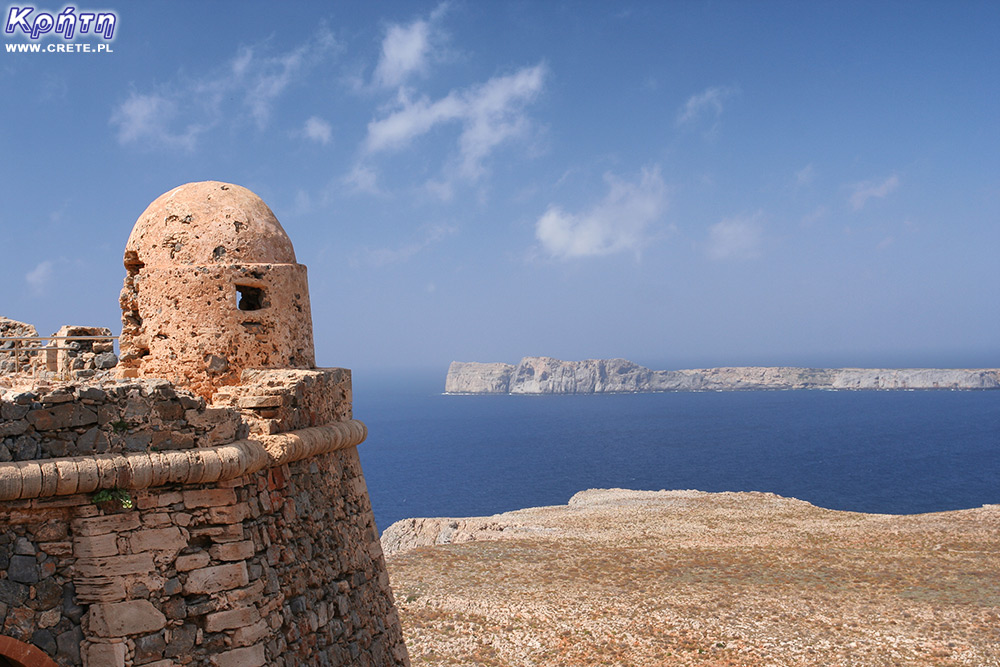 View from the fortress
View from the fortress
In the years 1579-1584, the Venetians who ruled over Crete at that time, built an impressive fortress on this small island. The choice was not accidental because its strategic location made it possible to protect north-eastern Crete and the area between western Crete and the Peloponnese. Even today, when little is left of the fortress's glory days, its majestic size is impressive. The fortress has a triangular shape, and the walls, built of limestone, are nearly 600 meters long. It should be noted that from the west side of the access to the fortress there are steep rocks, and the fortress covers an area of 3 hectares. This fortress was able to accommodate 3,000 people, but interestingly, at a time when it was under the Venetian jurisdiction, its potential was not used in larger battles.
The entrance gate and the characteristic corner bastions have survived to our times. Inside the fortress there are two cisterns to collect rainwater, the remains of the Church of the Annunciation, which was converted into a mosque in Turkish times, and a gunpowder warehouse. The imagination of visitors can be fueled by a legend about a great treasure buried here.
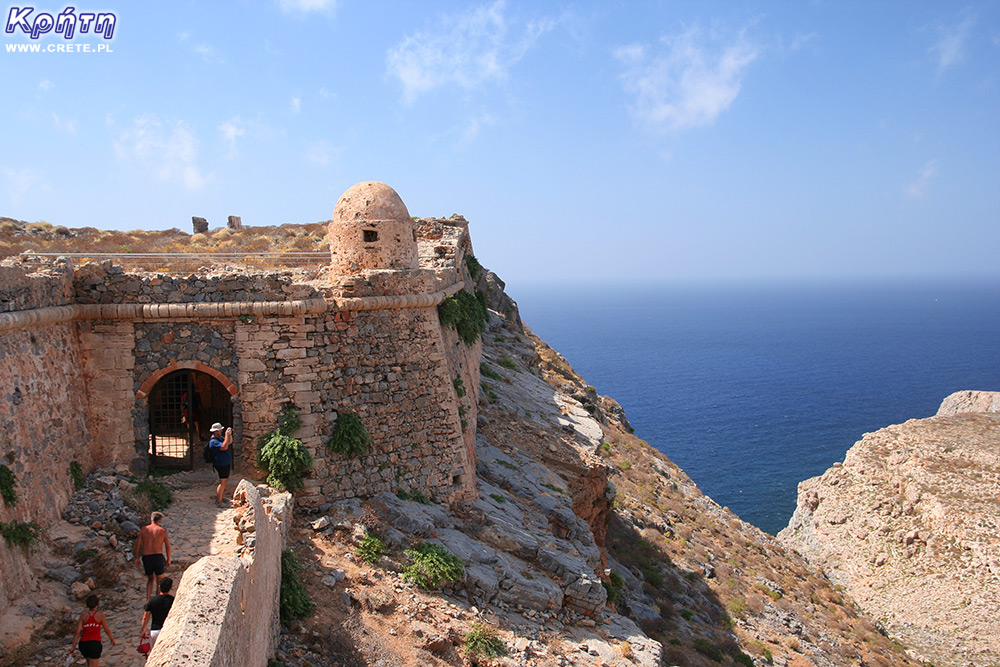 Entrance to the fortress
Entrance to the fortress
In 1645, the Turks, expanding their sphere of influence, became interested in Crete, who transferred their army of 60,000 here. In three years, the Ottoman army systematically took control of the largest cities of the island. The resistance of each of them lasted about 2 months on average. The exception was Candia, today's Heraklion, which defended itself for 22 years. In 1669, the commander of the Venetian army, Francesco Morosini, signed a capitulation agreement, which finally sealed the fate of Crete, which from then on was entirely subordinated to Turkish rule.
One of the points of the act of capitulation was, however, leaving the Venetians in the hands of three fortresses located in Souda, Spinalonga and the island of Imeri Gramvousa. Thanks to this, the Venetians hoped to regain control over Crete.
In this way Gramvousa became the base of the Venetians, who took action from there to recover the island from the Ottoman hands. This situation, however, did not last long, because in 1692 one of the Venetian commanders, Luca Della Rocca, a Neapolitan, was bribed by the Turks and simply handed over the fortress to them. Even the ironic nickname "Captain Gramvous", given to him by the Turks, clung to him. The Turks began to fortify the fortress. They transported 66 guns here, transferred strong troops and made the fortress unavailable for many years.
In 1821, another uprising broke out, which was to give Greece the longed-for independence and allow it to throw off the hated Turkish yoke. In 1825, Greek and Cretan revolutionaries recaptured the Gramovous Fortress from Turkish hands, using an old-fashioned trick of disguising themselves as the enemy. For three years, the fortress became a "nest" of several thousand Cretan revolutionaries and a base for armed actions against the Ottoman occupiers. Both sides waged a devastating battle against each other, and in the meantime, the current residents of Gramvous increasingly adapted the fortress to their needs and organized daily life on the island. A school and a church appeared on the island.
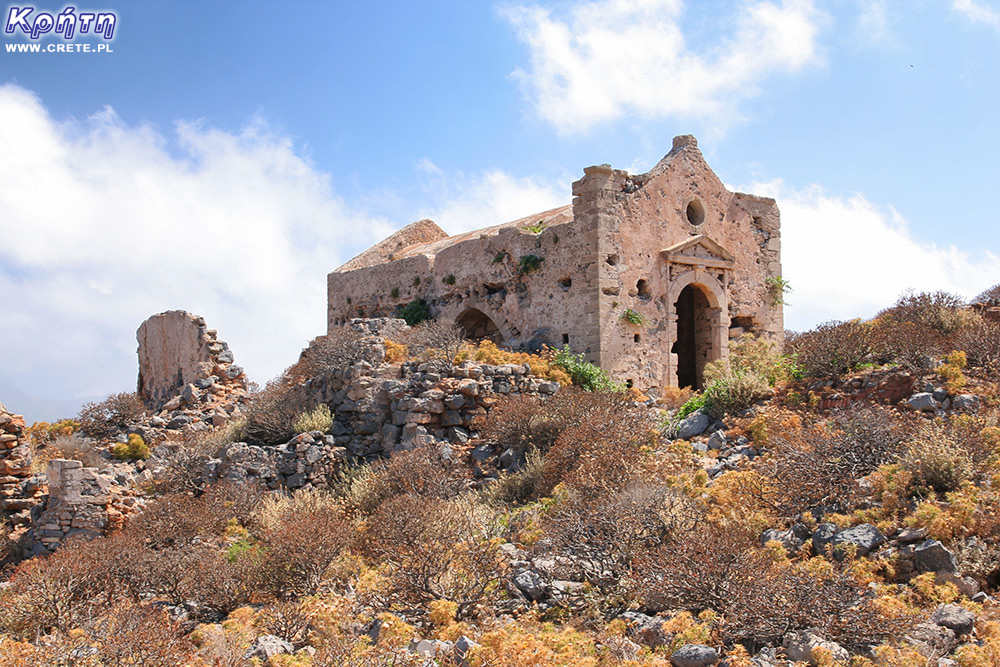
At that time, many people sought refuge in this place from the increasingly devastating revolutionary turmoil. If you have been to this island, you know that it is not a fertile agricultural area that would be able to feed thousands of inhabitants of the fortress. Notorious food supply problems caused revolutionaries to attack ships passing nearby. Other countries whose ships fell victim to the pirates of Gramvousa could not turn a blind eye to such "arbitrariness".
In 1828, pressure from France and Great Britain forced the Greek government to take action, which put an end to piracy, and the island's inhabitants once again had to change their place of residence. After these events, the islet temporarily came under British rule, but in 1830 the island was again handed over to the Turkish authorities under the London Protocol as a sign of international "solidarity" and remained in Turkish hands until independence was regained by Crete.
The island has been uninhabited since then, and the last decades of organized tourism development have attracted considerable interest. And so Gramvousa from the seat of revolutionaries turned into one of the main tourist attractions of people vacationing in Crete.
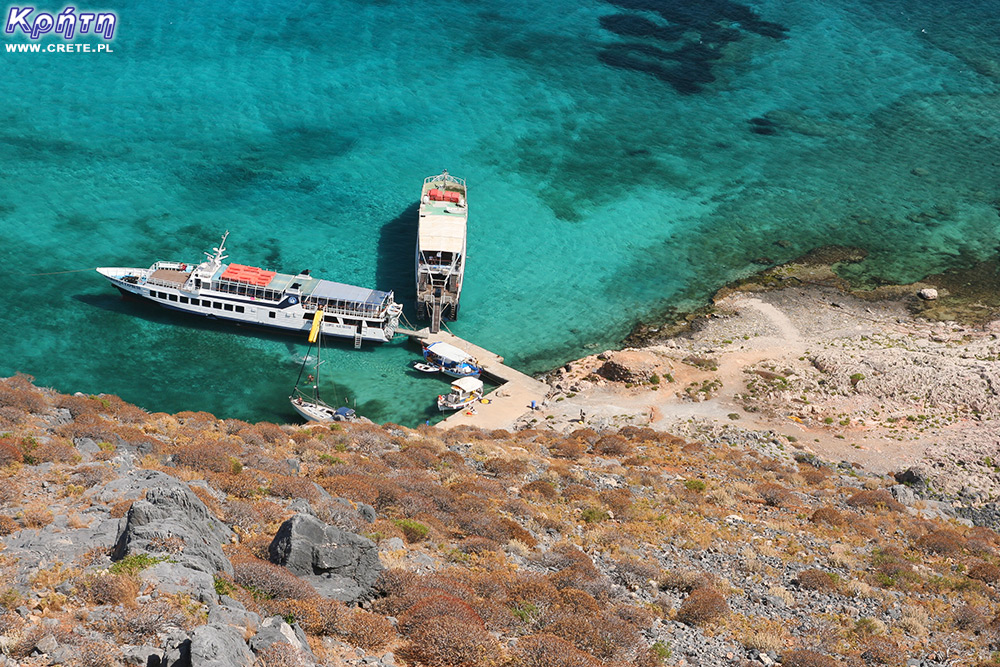 View of the marina from the fortress
View of the marina from the fortress
If you are going to visit Gramvousa it is best to bring more comfortable shoes and put them on before entering. Of course, we know that there are powerful people who will run up to Kazbek in socks, but twisting your leg on the approach to this fortress is no fun. Like climbing that rocky climb in thin-soled sandals. Of course it is possible, but no comfort.
In addition, it is also worth taking something with you that will protect your head and skin from the scorching sun and a supply of water. After 20 minutes of ascent, you will definitely need it. Those who cannot climb the mountain for some reason can of course stay at the bottom of the island, near the marina. Then sunbathing accessories will come in handy.
↤ click the appropriate part of the island to change the bottom map
W 2002 roku Falasarna zdobyła tytuł najlepszej plaży w Grecji. Wyróżnienie to nie jest bynajmniej przypadkowe, gdyż miejsce to jak na standardy Krety jest naprawdę unikalne.
Elafonisi is a small island located at the end of the southwestern edge of Crete. A characteristic feature of Elafonisi is the shallow lagoon connecting it with Crete.
Elafonisi is a small island located at the end of the southwestern edge of Crete. A characteristic feature of Elafonisi is the shallow lagoon connecting it with Crete.
This is the second largest airport (IATA code: CHQ) in Crete. In 2010, the airport in Chania served a total of over 1.65 million passengers.
Chania (Χανιά) is the second largest (after Heraklion) city of Crete. The biggest advantage of Chania is the area of the Old Town and the beautiful Venetian Harbor.
Aptera is a city whose history dates back to at least a thousand years before our era. In the peak period, about 20,000 lived in it. people, of which only 1/5 were free people.
Chania (Χανιά) is the second largest (after Heraklion) city of Crete. The biggest advantage of Chania is the area of the Old Town and the beautiful Venetian Harbor.
The genesis of the name of this poviat will not surprise anybody who will break the road from the Imbros gorge to Hora Sfakion.
Frangokastello is a small fortress that was built by the Venetians over four years from 1371. Initially, the castle was named after Saint Nikitas.
(Χρυσοσκαλίτισσα) The Church of the Blessed Virgin Mary with the Golden Step from the 17th century is the westernmost church building of this type.
(Χρυσοσκαλίτισσα) The Church of the Blessed Virgin Mary with the Golden Step from the 17th century is the westernmost church building of this type.
Omalos is a perfect starting point for exploring the Samaria Gorge. Located over 1,100 m above sea level extends over an area of 25 km2. Its size corresponds more or less to the size of the Lasithi Plateau.
Located 47 km from the city of Chania, it is the only freshwater lake in Crete. Its area is about 580 thousand. sqm. and the maximum depth is about 45 meters
Omalos is a perfect starting point for exploring the Samaria Gorge. Located over 1,100 m above sea level extends over an area of 25 km2. Its size corresponds more or less to the size of the Lasithi Plateau.
The steel crossing, which in the central part is separated from the ground by nearly 150 m, is at the leading position of the places where the longest bungee jumps are made.
Chania (Χανιά) is the second largest (after Heraklion) city of Crete. The biggest advantage of Chania is the area of the Old Town and the beautiful Venetian Harbor.
The genesis of the name of this poviat will not surprise anybody who will break the road from the Imbros gorge to Hora Sfakion. Word
This is the second largest airport (IATA code: CHQ) in Crete. In 2010, the airport in Chania served a total of over 1.65 million passengers.
Chora Sfakion is an extremely picturesque mountain village of the mountainous and wild Sfakia region
Loutro is famous for the fact that you can get to it only from the sea or walk on the mountain trail, because there is no other road here.
Stavros used to be a small fishing village. Today, it is primarily a tourist destination, but in a positive sense.
The cave is less than 1 km from Moni Gouvernetou Monastery. You will reach it using the pedestrian trail that has been marked out along the slope of the Avlaki Gorge.
Balos is one of Crete's flagship beaches if not all of Greece. We can assure you that the landscapes you see during your trip to Balos will remain with you for a very long time.
Moni Katholiko is probably the oldest and most spectacular monastery in Crete. It is located 20 km north-east of Chania.
The Orthodox monastery of Agia Triada, located on the northern part of the Akrotiri peninsula, is one of the most beautiful and richest monasteries in Crete.
The Orthodox monastery of Agia Triada, located on the northern part of the Akrotiri peninsula, is one of the most beautiful and richest monasteries in Crete.
Gouverneto Monastery is probably the oldest active Greek Catholic monastery located on the Akrotiri peninsula near Chania.
The length of the trail leading through this place is about 8 kilometers and the difference in altitude is about 600m.
Agia Roumeli znajduje się na południowym wybrzeżu Prefektury Chania, pomiędzy miejscowościami Chora Sfakion i Paleochora.
Until the early nineties, this place was known only to few tourists and local residents.
Paleochora is a quite well-organized tourist town, with a beautiful large sandy beach
Ruiny starożytnego miasta Lissos znajdują się około 3,5 km od miejscowości Sougia na południowym wybrzeżu Krety.
Samaria is one of the most important tourist attractions located in the western part of Crete.
On the north-western coast of Crete, at the foot of the Gramovous peninsula, there are ruins of the ancient port of Korikos, later known as Falassarna.
Krios Beach is located about 9 km west of Paleochora and it is also the last beach on this stretch of the southern coast
Between the villages of Topolia and Koutsamatados there is an interesting cave known as Agia Sofia
Milia is an authentic mountain settlement, which most probably dates from about the seventeenth century.
On the edge of the village of Potamida grows a complex of clay mounds called Komolithi (Komolithoi)
Grammeno (Γραμμένο) is a beach that can be counted among one of the best and most beautiful beaches in this part of Crete.
Platanias is a popular tourist destination. It is here that there are very interesting tunnels from World War II.
Polyrinia was one of the most important city-states of western Crete during the Hellenistic and Roman periods. It was built amphitheater on a steep hill, rising to a height of 481 meters above sea level
The Agia Irini gorge, just a short distance from the village of Sougia, is one of the most popular hiking destinations.
The island of Gramvousa, or in fact Imeri Gramvousa (Ήμερη Γραμβούσα), is an inseparable point of a trip that combines a stay in the Balos Lagoon with visiting the remains of a fortress located on the top of the island of Imeri Gramovousa.
Agia Roumeli is located on the south coast of Chania Prefecture, between Chora Sfakion and Paleochora.
The Byzantine church of Agios Pavlos was erected on the remote Selouda Beach in the south of Crete.
There is a beach in Crete that literally makes some people shiver. This place is Seitan Limania which can be translated as Satan's Ports or Cursed Ports.
Aspri Limni means White Lake, although the lake is just a conventional name. Under this term there is a small bay.
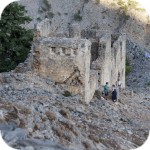
Agia Roumeli is the end point of the Samaria National Park route. Most people, after several kilometers of walking through the gorge, only dream of reaching the white buildings of the village, regenerating their strength and jumping into the sea. However, if, after passing Samaria, someone still has a lot of energy and enough time before the ferry leaves, we suggest entering the Turkish fortress located just above the village. To see its massive walls, just look up as you stroll through the streets of this village.
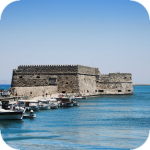
Koules is a great example of Crete's multiculturalism. Located today in Greek hands, it was built by the Venetians, but is called a name taken from the Turkish language. Koules is derived from the words of Su Kulesi, which signify the Water Tower. Through the Venetians, this building was called the sea fortress - CastelloMare or RoccaMare.
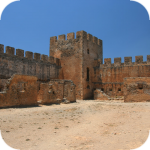
Frangokastello is a small fortress that was built by the Venetians over four years from 1371. Initially, the castle was named after Saint Nikitas, but the local population, who did not like the Venetians, renamed the castle at Frangokastello, or the Franks Castle (a Catholic foreigner). The name was so good that in time the Venetians also treated it as officially in force.
Komentarze
komentarz z
Byliśmy, zwiedziliśmy
komentarz z
Warto zobaczyć, widoki przednie
komentarz z
Tydzień temu
komentarz z
Miałem okazję zwiedzać, super
komentarz z
komentarz z
Naprawdę warto Polecam
komentarz z
Przepiękne miejsce , byłam i polecam widoki mega ❤
komentarz z
Piękne wspomnienia !
komentarz z
komentarz z
To jedno z tych miejsc, do których chce się wrócić
komentarz z
Niezapomniane widoki z Gramvousy godne polecenia!
komentarz z
Coś wspaniałego
komentarz z
Byłam, widoki przepiękne!
komentarz z
Polecam
Wypełnij poniższy formularz aby dodać komentarz
lub kliknij w poniższy link aby skorzystać z możliwosci komentowania przez facebooka:
https://www.facebook.com/crete.poland/posts/10158035578797551